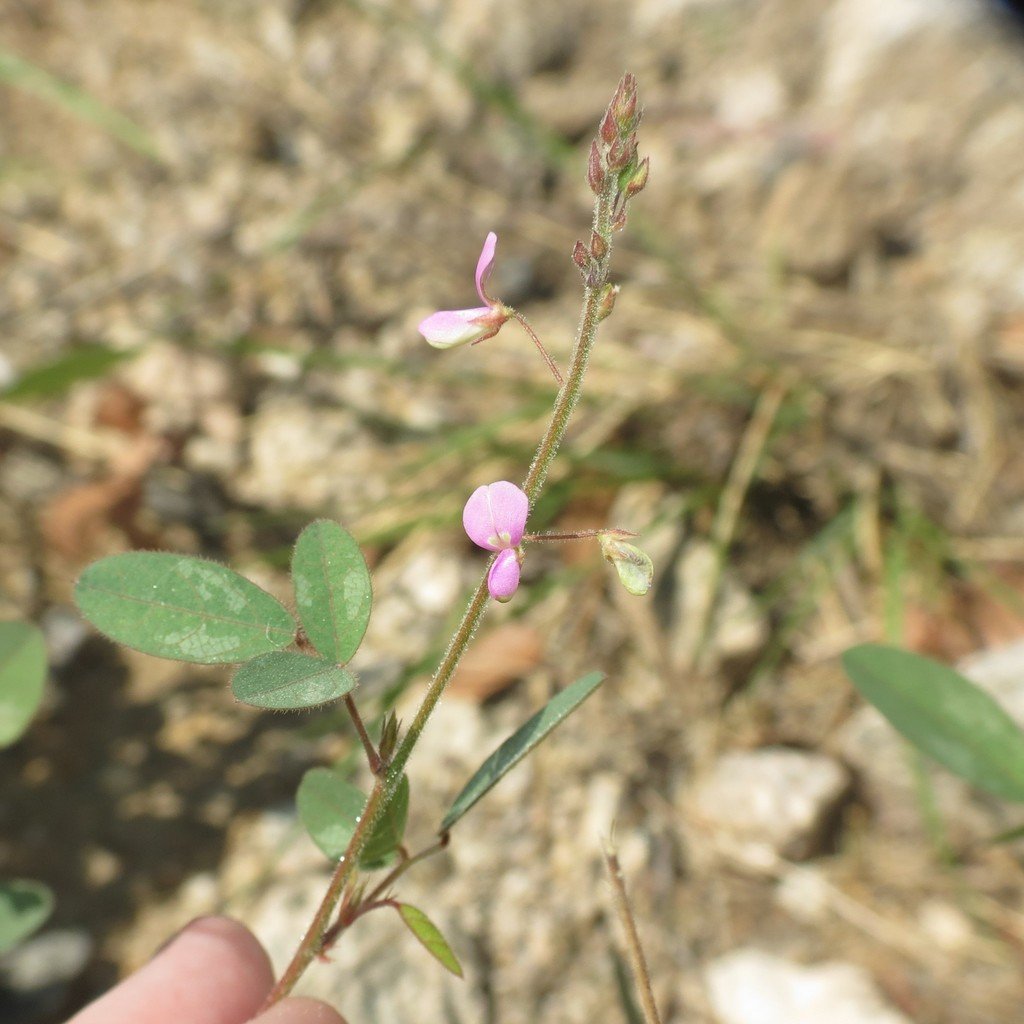The Genus Desmodium
Family: Fabaceae
These plants are known as ticktrefoils—the name derives from the word tick, which refers to the plant's loments – pods that break apart into segments that each contain one seed, and the word trefoil which means “three-leaved”.
The native species of this genus are rarely in cultivation. There are 185 worldwide. They are distributed widely – from Quebec to northern Argentina in the Americas, across northern and southern tropical Africa, in the southern Arabian Peninsula, in Myanmar and Thailand, New Guinea, and northern and eastern Australia. There are over a dozen species in Arizona.
Grow plants in full to part sun, with moderate water (plants all seem to want very good drainage). Most of our species are native to higher elevations, so they are cold-hardy in the low desert.
Most species of Desmodium are important and highly nutritious to browsing animals in the wild.
Photo of Spiked Ticktrefoil (Desmodium cinerascens) by Sue Carnahan, SEINET
This species is undervalued and should be planted more. Not only are they fantastic nectar plants for butterflies, native bees, and many other pollinators, but also they serve as larval host for MANY butterflies and moths. The following species of butterfly larvae are likely to be found on Desmodium species:
Eastern Tailed-Blue (Cupido comyntas)
Dorantes longtail (Thorybes dorantes ssp. dorantes)
Desert Cloudywing (Thorybes casica)
Northern Cloudywing (Thorybes pylades)
Long-Tailed Skipper (Urbanus proteus ssp. proteus)
Golden Banded-Skipper (Telegonus cellus)
Worldwide, Tick-trefoils are used in agriculture can also be used as living mulch and as green manure, as they improve soil fertility via nitrogen fixation. Several Desmodium species release organic compounds, aerially and into the soil, which make them useful for agriculture: Allelopathic compounds are used there via push-pull technology. For this Desmodium heterocarpon, Desmodium intortum, and Desmodium uncinatum are inter-cropped in maize and sorghum fields to suppress witchweeds, including Asiatic witchweed (Striga asiatica) and purple witchweed (S. hermonthica) and to repel Chilo partellus, a stem-boring grass moth. Insects (including pests) are likewise repelled by high amounts of antixenotic allomones produced by Desmodium.
A few species are used to make dye.
Spiked Ticktrefoil (Desmodium cinerascens) is one of the bushier species of this genus and should be planted more often in landscapes. Photo by Pete Siminski , iNaturalist
San Pedro Ticktrefoil (Desmodium batocaulon) is herbaceous and low-growing. Photo by Jack Dash, SEINET
One of the key characteristics of ticktrefoil plants is the nature of the divided seedpods where the individual seeds eventually separate from each other. New Mexico Ticktrefoil (Desmodium procumbens var. neomexicanum), photo by Patrick Alexander, SEINET
The flowers of New Mexico Ticktrefoil (Desmodium procumbens var. neomexicanum) photo by Steve Ganley , iNaturalist
Seeds of Santa Cruz Island Ticktrefoil (Desmodium psilocarpum) photo by Dan Beckman, SEINET

Flowers of Santa Cruz Island Ticktrefoil (Desmodium psilocarpum) photo by C. Mallory, iNaturalist






